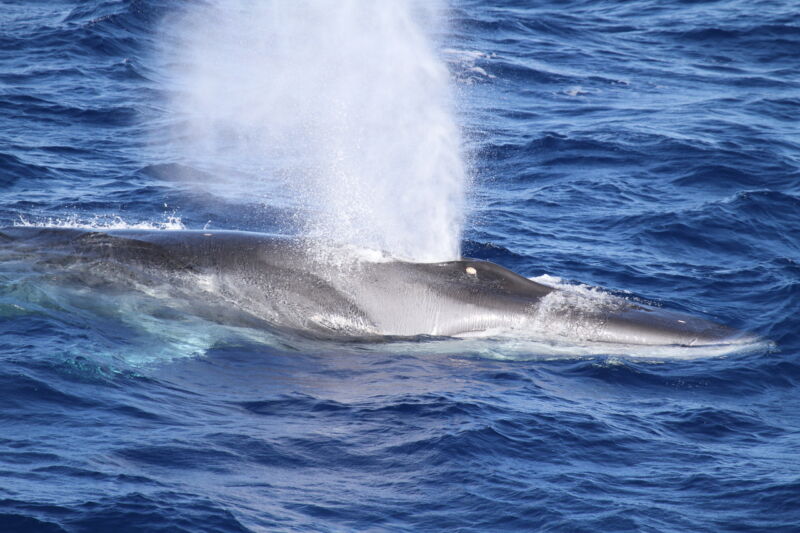
People tend to think of seismic waves as little more than signals of tectonic events, like an earthquake or lava shifting under a volcano. But these vibrations are also our best way of getting a clear picture of our planet's internal structure. By watching how the vibrations' paths shift as they encounter different materials, we can get a picture of where different rock layers meet, where rock becomes molten, and more.
In some cases, we get this picture by waiting for a natural event to produce the seismic waves. In others, we get impatient and set off explosive charges or use a powerful sound-making device. Today, Václav Kuna and John Nábėlek of Oregon State University are describing yet another option: waiting for a whale to float by. Using the songs of passing fin whales, the researchers were able to reconstruct the upper layers of the seafloor off the coast of Oregon.
Quite a song
The song of a fin whale is not exactly the sort of thing you'd typically describe as musical. It's generally in the area of 20Hz, which sounds more like a series of clicks than a continual sound, and the whales produce it in second-long bursts separated by dozens of seconds. But they are loud. A guidance on hearing risks places danger at any level above 80 decibels and the loudest concerts as hitting roughly 120 decibels. A fin whale's song can be in the neighborhood of 190 decibels, and it typically goes on for hours.
No comments:
Post a Comment